2009 Nissan Murano

When the Nissan Murano first appeared in the early noughties, it was the most futuristic design available, especially since most of its competitors were trying to ape the still-upright-and-boxy traditional SUVs. Based on the front-wheel-drive Altima’s platform, the Murano offered decent levels of equipment, a healthy V6 engine, optional all-wheel drive and a reasonable ride.
FAST FACTS
| 1. For 2009 the Murano gets a modest redesign. |
| 2. All Murano’s come with Nissan’s 3.5-liter V6 engine that makes 265hp and 248 ft-lbs of torque and is mated to a CVT transmission with six pre-set gears. |
| 3. The Murano isn’t cheap for a non-luxury SUV with a starting MSRP of $27,680 and $40,010 for the top-line LE with plenty of options. |
Fast forward to 2009, and the Murano is up for its first makeover. In the grand scheme of things, not much has changed, but the competition in this segment is much fiercer than in ’03. Just about every major manufacturer has at least one such vehicle in its line-up – and sometimes two or three. The big question is whether Nissan’s evolutionary makeover is enough to keep it relevant.
WHAT’S CHANGED?
Size-wise, the new Murano is only fractionally larger than its predecessor, although the new design is certainly more controversial. Its snout is significantly pointier than previous, leaving a huge front overhang, while the sculptured front fenders mean it’s more difficult to figure out where its corners are when parking.
The rear follows the general themes from its smaller sibling, the Rogue, and doesn’t match the front’s drama. The de rigueur rising beltline, thick A-pillars and small rear window mean plenty of blind spots, although the large side mirrors do a decent job of filling in the blanks.
All Muranos feature Nissan’s tried-and-true 3.5-litre V6 with 265 hp and 248 ft-lbs of torque, matched with a continually variable transmission (CVT), which also allows you to manually select from six preset ratios if desired. Front-wheel drive is standard on every model but the top-of-the-line LE.
Safety features include six airbags, ABS with emergency brake force distribution and brake assist, stability and traction control, and active head restraints for the front row.
Although the entry level Murano S starts at a reasonable $27,680 ($37,648 CDN), my tester was in loaded $37,260 ($47,498 CDN) LE trim, meaning standard all-wheel drive, HID headlights, fog lights, 20-inch wheels with all-season tires, heated mirrors, power-adjustable heated leather seats front and rear, climate control, auto-sensing windshield wipers, power tilt/telescoping steering, keyless entry and ignition, rear-view camera with a 7-inch display, an 11-speaker Bose audio system, Bluetooth connectivity and secondary audio and cruise controls on the steering wheel.
Metallic paint was an extra $135, while the excellent hard-drive-based navigation system and 9.3GB ‘music server’ (onto which you can copy your MP3 files) with appropriate voice controls was a pricey $1,850 ($2,950 CDN) option.
BEST DESIGN SO FAR
All that luxury is thrown into one of Nissan’s better cabin designs to date. The gauges are bright and legible no matter what time of day, major controls fall right to hand, and the materials are better than average. It’s very easy to find a comfortable seating position, and there’s a decent amount of room in the second row, even behind my 6-foot-three-inch frame.
Cargo space is a reasonably generous 31.6 cu.-ft., and the rear seats use power assist to fold flat, more than doubling usable room to 64 cu.-ft.
On the road, however, the Murano’s habits are merely OK. It’s not an overly sporty vehicle, thanks to too much lean and vague steering, but the suspension bumps and thumps over the smallest imperfections. It’s probably the unchanged suspension setup trying to deal with the extra weight of the 20-inch wheels, but there’s a lot Nissan could do to improve things for future releases.
Performance-wise, acceleration is strong and the CVT works well enough that you never notice it.
While the Murano offers a huge number of features and look-at-me styling, the only problem is its pricing. My ‘LE’ tester’s sticker totaled $40,010 ($50,583 CDN) before freight, PDI and taxes. That is a huge amount of dough to drop on a five-seater without a ‘premium’ badge.
THE COMPETITION
A similarly equipped Ford Edge Limited AWD runs a touch over $37,500 ($46,000 CDN), while a loaded – and much more attractive – Mazda CX-7 can’t get much higher than $33,745 ($42,000 CDN). Toyota’s intriguing new Venza won’t break $37K ($42,000 CDN) in comparison. Even upscale sibling Infiniti’s own EX35, although smaller and less practical, would only total about $42,000 ($48,600 CDN) for all the bells and whistles.
And that’s only counting dedicated five-seaters. Excellent vehicles like the seven-seat Toyota Highlander and Ford Flex either beat or match Nissan’s pricing, and are much more clever designs.
THE VERDICT
Other than perhaps styling and brand loyalty, there really isn’t anything the Murano does outstanding enough to make it worthy of recommendation. It seems Nissan stood still these past six years while the market is moving much, much faster. However, it wouldn’t take much to bring it back in line with the competition: fix the rowdy suspension and bring down the price.
PLUS
- Cargo room
- Easy-to-use Media Centre
- Luxurious cabin
MINUS
- Price
- Rides too rough
- Exterior styling

Mark has worked as an automotive journalist for over 10 years, starting as a student at Centennial College, in Toronto, by launching an auto-review section in the college paper, The Courier. Since then, he's been Editor of Inside Track Motorsport News and its Streetwise section of new-vehicle reviews and industry news, done stints at Carguide and World of Wheels, and currently works as an award-winning freelancer for AutoGuide.com, MSN Autos Canada and more. He's also a first-time father, so don't be surprised if the frustration of properly installing a car seat creeps into his work.
More by Mark Atkinson


















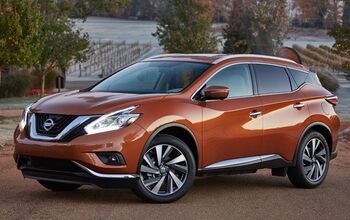
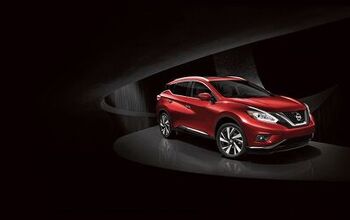






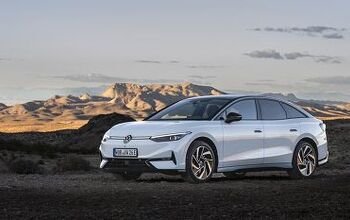
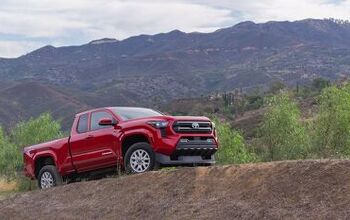
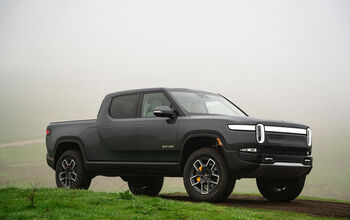


Comments
Join the conversation